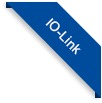
In almost all processes in dairies, breweries, and in the food, beverage and life science industry, pressure control contributes significantly to ensuring the efficiency of the processes, guaranteeing constant product quality, avoiding plant downtimes, ...

Hygienic pressure measurement up to 600 psi / 40 bar at extreme process temperatures up to 400 °F (205 °C), even in steam environments where conventional pressure gauges or those with siphons are often insufficient.


The benchmark for precision in level and pressure control, even with turndown and temperature changes. FOOD and LIFE SCIENCE versions available.


Temperature compensated transmitter for process pressure and level measurement in pipes and vessels | With IO-Link

New D3 Pharma Differential Pressure and Level Transmitter which is the most complete electronic differential transmitter with best-in-class performance and dual mA output developed for Life Science Industry

The D3 is Anderson-Negele’s NEW differential pressure/level transmitter for applications in food, dairy and beverage processing plants.

Hygienic pressure transmitter with replaceable components and display

Compact pressure transmitter with hygienic connections and no display

Life sciences series pressure transmitter with repairable components

Life Sciences mini pressure transmitter with autoclaveable version

Mechanical pressure gauge with 90mm dial and hygienic fittings

Homogenizer gauges with 90mm dial and optional transmitter output

Life sciences series mechanical pressure gauge with 90mm dial

Life Sciences series hygienic pressure gauge with 63mm dial

90mm hygienic digital pressure gauge with optional switches

Life sciences series 90mm digital pressure gauge w/ optional switches

Life sciences series pressure transmitter w/4-20mA and Hart output

Life sciences series pressure transmitter w/ 4-20mA output

Pressure transmitter w/4-20mA and Hart output and optional display

Analog pressure transmitter with 4-20mA output and optional display
In industries such as dairy, brewing, beverage production, winemaking, and juice processing, accurate pressure measurement is crucial for maintaining process efficiency and product quality. Our high-precision pressure sensors ensure reliable monitoring of process pressure while providing essential protection against contamination. In the life sciences sector, where stringent material quality and exact pressure adherence are paramount, our specialized pressure devices meet the demanding requirements of pharmaceutical and biotechnical applications. We offer a variety of options, including sensors for low and high pressures, differential pressure measurement, and remote pressure monitoring, to suit diverse operational needs.
Pressure instruments serve various applications across industries:
In many production processes or in CIP/SIP processes, inline pressure sensors ensure that the specified positive or negative pressure values in pipes, tubes, lines, process vessels, storage tanks, bioreactors or other containers is maintained. Pressure transmitters and manometers with switching output can report the deviation to the PLC via an alarm signal, so that an automatic, immediate reaction or protective measure can be triggered.
With pressure sensors, the level in containers can be determined and transmitted with the highest precision where other level measurement techniques are not possible or not precise enough due to tank size, design, materials, media or other reasons.
Intelligent pressure sensors with integrated tank linearization can even go one step further: the combination of level, tank geometry, density compensation and temperature compensation allows the volume or mass in pounds, gallons, % to be transmitted directly and with maximum precision at any time and for any medium.
By equipping a pressure sensor with two sensor stems and signal converters the parallel detection of two pressure values is possible. This allows for the precise measurement of the differential pressure in a pressurized vessel and thus at same time both the precise metering of the level and the monitoring of the head pressure in a pressure tank, such as a fermenter tank, a sterile tank or a juice storage tank. This digital measuring system is easy to install, does completely without capillaries, is reliable and safe. It can be used to monitor the risk of contamination due to a drop in pressure or the post-fermentation in juice production.
Pressure sensors are classified according to their design into mechanical pressure gauges and electronic pressure transmitters.
being mechanical pressure sensors with display, transmit the measured value in analog or digital form directly to an on-site display. There are also pressure gauges with switching output which, as analog pressure switches or digital pressure switches, can transmit the measured value for process control or as an alarm signal to the PLC control center.
work with an internal piezoelectric signal converter. They can indicate the measured value in a display, transmit it to the PLC or process it in their intelligent electronic unit itself with other measured data such as temperature. This means that for any requirement a suitable measurement technology with convenient data detection, processing and transmission is available. Another differentiation is the material used for the pressure diaphragm or pressure cell.
These are used in most versions of Anderson-Negele pressure sensors. Depending on the application and medium, the stainless-steel grade and surface roughness can be selected individually.
Anderson-Negele pressure sensors are developed according to the “HYGIENIC BY DESIGN” principle and comply with the principles and specifications of institutions and organizations such as 3-A, FDA or EHEDG with regard to the criteria for non-dead-leg installation, cleanability, material quality and handling.
Anderson-Negele pressure sensors are available with pressure cells for relative pressure, for absolute pressure or for compound pressure.
With relative pressure cells, the back of the diaphragm is vented, i.e. the sensor measures the positive pressure relative to atmospheric pressure.
In absolute pressure cells, the vacuum generated during the manufacturing process remains between the diaphragm and the base body, i.e. the sensor measures the pressure in relation to the vacuum as a reference point. Absolute pressure measurement is selected to eliminate the influence or variation of atmospheric air pressure.
Compound pressure cells allow a relative measurement with vacuum range.
Measuring ranges: A large selection of measuring ranges, i.e. the difference between lower and upper maximum value (e.g. 0…6 PSI / -30”HG/0/500 PSI) allow a specific and precise adaptation to all process conditions. Even very low pressures up to 0…0.6 PSI are possible by turndown
Anderson-Negele’s Longlife technology significantly enhances measurement sensitivity and durability. Our wear-free mechanical devices deliver ±0.25% accuracy for years, supported by a robust hydro-mechanical damping system that protects against severe pressure surges. The high-quality sensor materials and precise in-house welding ensure a long service life, while the recessed diaphragm design prevents handling damage.
The gauges feature a two-point zero and span adjustment, extending service life and reducing early replacements, which contributes to a favorable cost of ownership. Practical for long-term use, these gauges are designed for robustness with autoclavability, CIP/SIP capability, surface roughness of Ra ≤ 0.2μm, and temperature resistance up to 165°C. The IP66-rated, hygienic one-piece design is easy to clean, and the large, clear display is available in 63 mm and 90 mm diameters, with adjustable pressure scales. The electronic version includes a backlit LCD display for easy reading.
The use of USP Class VI compliant pressure transmitting fluid prevents contamination from diaphragm damage, while the stainless-steel diaphragms offer extended life and reduced fracture risk.
Anderson-Negele provides a comprehensive product range from robust, low-cost pressure transmitters for standard process requirements up to intelligent pressure sensors with high-end equipment a sophisticated feature for full automation. Even for the most difficult processes it’s possible to find the best suitable and most economical device for every requirement, every process and every application:
High process temperatures: Special high temperature pressure sensors allow process temperatures up to 480°F.
High pressure: Some applications, such as homogenizers, work with very high pressures. Anderson-Negele offers pressure gauges suitable for pressures up to 15,000 psig.
Overpressure resistance: In some processes, strong pressure surges can occur, which can damage the pressure sensor. In this case a sensor with a high overpressure resistance should be used. At Anderson-Negele, variants with an overpressure resistance of 580 PSI are available.
Field Repair: Modular pressure sensors with Smart Replace Design allow easy on-site replacement of components, simplifying spare parts inventory and increasing sensor availability.
Temperature compensation: With hydrostatic level measurement, a temperature drift can lead to inaccurate output values. With Anderson-Negele sensors the deviation due to the temperature effect is up to 10 times lower than with conventional pressure sensors.
Turndown: Even with turndown up to 10:1, the measurement accuracy at Anderson-Negele remains up to 0.15% due to the use of the calibrated measurement range as reference.
Pressurized tanks: For pressurized tanks, a differential pressure sensor with two sensor stems is the best solution for high-precision level or volume measurement.
Small tube diameters: The larger the diaphragm diameter, the higher the measuring accuracy. However, this becomes a problem with very small pipelines. This can be overcome by process adaptation with the CPM and CPM Mini adapter systems. These enable pressure sensors with standard diaphragms even for pipe diameters of only ¼”. Further information can be found in the product category Process adaptations.
The pressure meters are made of the highest quality materials. Depending on type and intended application, the following materials and surfaces can be selected:
Components in contact with the medium: Stainless steel 1.4404 (316L) / 1.4435 (316L)
Pressure cells: Stainless steel 1.4404 (316L) / 1.4435 (316L) / C276 Hastelloy.
Surface roughness up to Ra≤8 microinches (electropolished)
A 3.1 material certificate is available for pharmaceutical applications.
Due to their extremely robust and durable design, the sensors can withstand even the highest mechanical stresses such as vibrations and pressure shocks, which occur repeatedly in many real-world applications, and permanently ensure the highest precision.
A large number of different process adaptations ensure great flexibility with regard to installation in new plants and retrofitting in existing processes, tanks or pipes. In addition to pressure sensors with hygienic thread, tri-clamp connection or even O-ring seals, there are also variants that can be installed in pipelines with smallest nominal diameters from 1/4″.
Copyright © 2022 Anderson-Negele